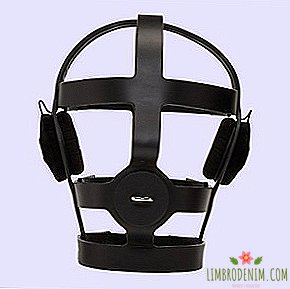My eyelids grow heavy: How to relieve stress with self-hypnosis
THOSE WHO LIVE IN STRESS BECAUSE OF WORK, SAMPLES AND DAILY PROBLEMS (that is, to all of us) will always be useful ways to help relax. If you have already mastered meditation and breathing exercises, or, on the contrary, you don’t like them, there is one more method that can be used in almost any setting - auto-training. We found out what was unusual in autogenic trainings and how to calm down and tune in the necessary fashion with their help, we found out from experts: psychiatrist Sofia Shemyakina, sports psychologist Xenia Poparenko, and a game psychotherapist, director of the Institute of practical psychology and psychoanalysis Tatiana Onikova.

Is it possible to hypnotize yourself
Autogenic training is essentially a method of auto-suggestion that helps regulate your mental state, relax, and improve concentration and attention. Such a technique was proposed in the thirties of the last century by a psychiatrist and psychotherapist Johann Schulz. The doctor found out that with the help of hypnosis the patient felt muscle relaxation and heaviness in certain parts of the body. Schulz found that concentrating on one's own sensations and causing certain physiological changes is possible without hypnosis, independently — for example, concentrating on the weight of the arm helps to relax its muscles, and close attention to the sensation of warmth in the face area leads to reddening of the skin due to the expansion of blood vessels and strengthening blood flow. Thus, an idea appeared to create a method with the help of which practically everyone will be able to independently plunge into a trance state and cause the necessary sensations.
Autogenic training is like a meditation or hypnosis session, but it’s wrong to equate these practices. Meditation can be aimed at achieving a variety of goals - from spiritual development to the recovery of the body, and the task of autogenic training can be relaxation or concentration and composure - for example, before competitions or important negotiations. As for hypnosis, it requires two participants, and the success of the event depends not only on the hypnotist, but also on the suggestibility of the hypnotized person; at the same time, auto-training is self-regulation accessible to everyone.
Level One: Relaxation
The classical method of auto-training includes two levels: relaxation and work with the body on the first level and visualization on the second. Ten minutes a day is enough for practice, but you can do half an hour. First, you need to immerse yourself in an autogenous state, adopting a comfortable posture: lie down or sit down so that your hands do not touch each other, and do not connect your legs, close your eyes and breathe deeply, without anything distracting. You can try to imagine that all experiences go away, and the body relaxes pleasantly. After you manage to keep the feeling of calm for more than a minute, you can proceed to the first level.
The first part of the workout is relaxation and work with the body. There are six basic exercises that help focus on different parts of the body. The first two - focus on the feeling of heaviness in the arms and legs and the feeling of warmth in them; while in a relaxed state you need to repeat in a calm voice: “My right arm is heavy. My left arm is heavy. My hands have become heavy. My right leg is heavy. My left leg is heavy. My legs have become heavy. My arms and legs have become heavy” and then: “Heat spreads over my right arm. Heat spreads over my left arm. Heat spreads over my hands. Heat spills over my right leg. Heat spreads over my left leg. Heat spreads over my feet. heat". The following exercises - concentration on the sensation of heat in the chest ("My heart beats smoothly and calmly"), breathing ("I breathe absolutely easy"), feeling warm in my stomach ("Heat spreads in my stomach") and feeling cool in the forehead ("My forehead is cool").

Second level: visualization
When you go to the second level you will need to turn on the imagination. There are many ways to visualize. They allow you to focus on those qualities that you want to develop in yourself, and are often used in the psychology of sports, when you need to tune in to a certain result, work out a movement that does not work, focus on each separate stage of the path to victory. For example, for a fencer, this may be a focus on only one single injection, which he must inflict, no matter what thoughts he may be distracting.
Visualization helps to finally relax and disconnect from everyday worries. Usually, the visualization starts with a roll of the eyes, and then you need to imagine a nice picture in order to “relax” your consciousness - slowly floating clouds, fluttering butterflies, calm sea, a green lawn on a sunny day. To facilitate the task will help leading questions: what time of year and day in the picture? Who is there present? What colors, sounds, smells surround? What feelings arise? Another option is to present any object on a dark background, keeping its clear and unchanging image for about ten minutes. With a lot of experience with auto-training, you can go on to visualize an abstract concept, such as happiness or love - but you need to be prepared for the fact that at the first attempts the result is unlikely to be high.
A smooth exit from the trance state is the final stage of auto-training. There is nothing complicated here: it is enough to listen to external sounds, open your eyes, stretch properly, in order to better feel your body, and slowly get up.
Can self-hypnosis cure diseases?
According to sports psychologist Ksenia Poparenko, stress often causes the feeling of losing support when a person stops trusting his body because it starts to fail him - for example, does not give the desired results in training. At such a moment it is especially useful to turn to the body, listen to it, feel how the muscles relax, how deep and calm breathing can be. To relieve stress is one of the main tasks of auto-training. And, if these trainings become permanent, the chance to improve well-being, regaining self-confidence, is quite high. It is important to remember that training should be regular, and the results will not be noticeable immediately, and not be upset if something does not work out - the feeling of despair will not exactly help to relax and solve existing problems.
Stress plays a role in a variety of diseases - from shortness of breath, headaches and insomnia to heart disease, digestive problems, sleep disorders and panic attacks. Of course, in itself, the elimination of stress will not cure a serious illness, but may be part of a complex therapy; In addition, calm and relaxation can simply improve the quality of life, improving mood. This is a good way of psycho-prophylaxis for those who are often nervous, but it’s definitely not worth relying on using auto-training to get rid of serious phobias. It is impossible to treat acute training with autotraining, when more serious interventions are needed - for example, medication.
Photo: Photorack - stock.adobe.com, Melinda Nagy - stock.adobe.com, Patryk Kosmider - stock.adobe.com





